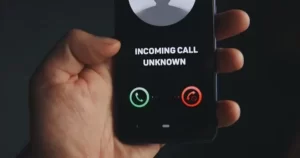Last updated on September 4, 2020
Ransomware has become one of the best-known cyber threats. Once a Trojan ransomware leaks into your system, it stealthily encrypts your files, including your valuable documents, videos and photos. The entire process runs in the background inside your computer, therefore the victim does not realize the problem until it is too late.
When it ends its dirty business, the Trojan informs the user that its files have been encrypted. If the victim wants to recover their files, then they will have to pay a ransom, which is usually hundreds of dollars, normally paid in bitcoins. Many ransomware victims do not have a great knowledge or a great experience in technology, so the inconvenience is twofold since most of them have to look for what a bitcoin is and where they can be obtained.
What makes ransomware a vicious scam is that the encrypted files retained, are still stored on the computer. This situation is a very sad and frustrating reality because the files can not be recovered without their unique encryption key.
It is increasingly evident that ransomware is a big problem that Internet users should pay more attention to in order to prevent a malicious infection. After all it is harder to deal with the consequences.
Here are 10 tips to protect your data against ransomware:
- Make sure you make copies of your important files periodically. It is highly recommended to create two backup copies: one stored in the cloud (using Dropbox, Google Drive, etc.) and the other physically (on a portable hard drive, usb, another laptop, etc.). Once your backup is ready , be sure to set certain restrictions on your files: your device for “plan B” should only have read / write permission, without the option to modify or delete the files. Your backup could save you from several situations, including the removal of important files by mistake or hard drive failure.
- Periodically verify that your backup is good. There are times when an accidental failure could involve damage to your files.
- Cybercriminals often distribute fake emails, mimicking notifications from online stores or banks, inviting the user to click on malicious links and distributing malware. This method is called phishing . Keeping this in mind, check your anti-spam settings and never open attachments sent by unknown senders.
- Do not trust anyone, literally. Malicious links can be sent by your friends on social networks, your colleague or your online videogame partner , who may have been compromised in one way or another.
- Activate the “show file extensions” option in your Windows configuration. This will make it easier to distinguish potentially malicious files. Since Trojans are programs, you should pay attention and stay away from extensions like “exe”, “vbs” and “scr”. You need to monitor this type of files, as they could be dangerous . Scammers could use various extensions to mask malicious files such as a video, photo, or document (such as hot-chics.avi.exe or report.doc.scr).
- Regularly update your operating system, browser, antivirus, and other programs. The culprits tend to exploit vulnerabilities in software to compromise systems.
- Use a strong antivirus program to protect your ransomware system. We recommend Kaspersky Internet Security , which prevents viruses from entering your computer, or if there is already a virus infiltrating your system, it will protect important files using its specific competences. You can get best antivirus windows 10 from here.
- If you discover a fraudulent or unknown process on your machine, disconnect the Internet immediately. If the ransomware fails to remove the encryption key from your computer, there is a chance to restore your files. However, new versions of this type of malware use a predefined key, so in this case, this advice would not work.
- If you are unfortunate enough to have your files encrypted, do not pay the ransom, unless instant access to a file is of vital importance. In fact, each payment fuels this horrible business that will continue to progress as long as people continue to pay.
- If you have been infected by ransomware, you should try to find the name of the malware: itmay be an old version and it is relatively easy to restore the files. The ransomware used to be less advanced.
In addition, the police and cybersecurity experts (including those working for Kaspersky Lab) collaborate to stop opponents and offer online file restoration tools. Some people have the opportunity to decrypt their files without paying the ransom.


















Be First to Comment